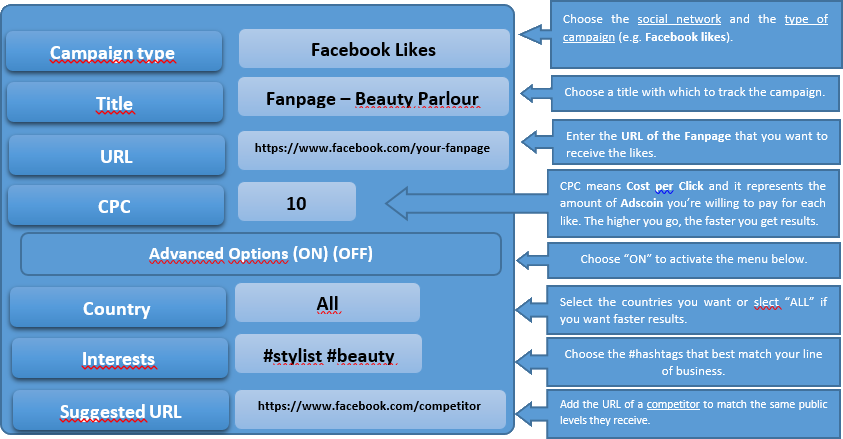“You have to learn the rules of the game. And then you have to play better than anyone else.” ~ Albert Einstein
Fundraising has been around as long as politics itself and it has become vital in the current political landscape.
In 2008, 5.3 billion dollars were spent on federal elections. Barack Obama spent 730M and John McCain spent 333M. The average winner of a house seat spent 1.4M on his or her campaign. In 2012 that federal election number jumped to over 6.3 billion dollars. Obama spent 985.2M and Mitt Romney spent 992.5M. The house number jumped to 1.5M to win a seat. The numbers are rising fast!
As political battles become more expensive, political fundraising political fundraising more important to the success of these campaigns. It is nearly impossible to win a race without outspending your opponent. Outspending your opponent means raising more money. The traditional methods for campaign finance include hosting events, direct mail, email blasts and telemarketing. With the meteoric rise in the usage of mobile devices, texting is starting to change the way organizations target donations.
You may be surprised to hear that direct mail is STILL the single biggest marketing expenditure. In 2014 email was the most effective form of fundraising. This is in spite of more than 70% of emails worldwide being reported as spam. Text messaging was not widely used for fundraising in 2014.
In 2012 for every dollar spent on direct marketing, the expected return was $12.18 (across all industries). Those are great returns, but where should you spend your money?
The following numbers are averages across all industries. Sources are listed at the end of the article. Below is a breakdown of the various means used for fundraising:
READ RATE:
—————————
1) TEXT: 98%
2) MAIL: 66%
3) EMAIL: 22%
4) PAY PER CLICK: 3.81%
5) TELEMARKETING: N/A
Text messages have 148.5% read rates over direct mail. Pay per click is the impression and click through. Telemarketing has no ability to brand your entity. Either people pick up the phone or they don’t. If you want people to receive your message, there is nothing better than texting.
RESPONSE RATE:
————————–
1) TEXT: 19%
2) TELEMARKETING: 8.21%
3) EMAIL: 4.2%
4) PAY PER CLICK: 3.81%
5) MAIL: 3.4%
Again, text messaging comes in at over double the effectiveness of telemarketing. Keep in mind though that the “response rate” for text messaging, email and pay per click involves clicking on a link. The response rate for telemarketing and email involves sending in money.
CONVERSION RATE:
—————————
1) TELEMARKETING: 8.21%
2) MAIL: 4.2%
3) TEXT: 1.68%
4) PAY PER CLICK: .22%
5) EMAIL: .21%
Direct mail and telemarketing are so popular because they are consistent with high conversion rates. Fundraising campaigns love that they can count on consistent numbers when they start a campaign. The challenge as you will see in our next set of data, is that there are massive costs associated with direct mail and telemarketing.
Keep in mind conversion rates for email and text rely heavily on the landing page. Studies have shown that personalized emails have higher conversion rates than non personalized. Although it logically stands to reason the same would be true of text messages, there are no studies quantifying that at the time of this writing.
COST PER MESSAGE:
—————————
1) EMAIL: $0.01
2) TEXT: $0.04
3) MAIL: $0.49
4) TELEMARKETING: $0.64*
5) PAY PER CLICK: N/A
Email has a cost when sending through a service (as you should for compliance). Texting costs can be as high as 10 cents a message and as low as 2.5 cents a message. This is why email was the number one tool last year. With response rates that are around 8 times as high as email, texting could cost up to 7 cents a text and still be a better option.
*Paying telemarketers $9/hour.
COST PER CUSTOMER ACQUISITION:
—————————
1) TEXT: $2.49
2) EMAIL: $4.98
3) MAIL: $51.40
4) PAY PER CLICK: $99.47
5) TELEMARKETING: $309.28
STACK RANKING THE MARKETING SOLUTIONS:
READ
—————————
1) TEXT: 1
2) EMAIL: 3
3) MAIL: 2
4) TELEMARKETING: N/A
5) PAY PER CLICK: 4
RESPONSE
—————————
1) TEXT: 1.6
2) EMAIL: 2.8
3) MAIL: 3
4) TELEMARKETING: 4
5) PAY PER CLICK: 4
CONVERSION
—————————
1) TEXT: 1
2) EMAIL: 3
3) MAIL: 5
4) TELEMARKETING: 2
5) PAY PER CLICK: 4
COST PER MESSAGE
—————————
1) TEXT: 2
2) EMAIL: 1
3) MAIL: 3
4) TELEMARKETING: 4
5) PAY PER CLICK: N/A
COST PER CUSTOMER ACQUIRED
—————————
1) TEXT: 1
2) EMAIL: 2
3) MAIL: 3
4) TELEMARKETING: 5
5) PAY PER CLICK: 4
FINAL RESULTS
—————————
#1 TEXT: 1.6
#2 EMAIL: 2.8
#3 MAIL: 3
#4 TELEMARKETING: 4
#5 PAY PER CLICK: 4
These numbers should make Campaign Finance Managers and Executive Directors all over America take notice. It should come as no major surprise that email and texting have a lower customer acquisition cost. Staffing telemarketers takes space, resources, software, phones, management and per dial costs. Direct mail takes paper, ink, stuffing envelopes, management, space and postage.
The clear winner is text messaging, beating out last years effective fundraising tool by 1.2 points. texting for fundraising
The cost of acquisition for texting is half that of email, which has the second lowest cost. Texting is also 124 times less expensive per customer acquisition than telemarketing and over 20 times less expensive than direct mail, which again was the number one expense last year for direct marketing.
SO WHAT DOES IT ALL MEAN?
Fundraising has a new weapon. Mobile fundraising is just scratching the surface in this are of Fundraising Text Donations. At any given moment, 91% of people in the United States have a cellular phone within arms reach. This is power and effectiveness that should be making Campaign Managers, Finance Directors and Executive Directors perk up.
Email was the most effective tool for fundraising in 2014, and texting has response rates up to 8 times higher, a 50% reduction in customer acquisition cost and a read rate over 4X higher. Perhaps the most amazing part of this story is how little texting base been used thus far for politics and fundraising.
Much like telemarketing, there are certain rules and regulations that need to be implemented. One of the first things an organization interested in using mobile marketing would be to change their contracts (online and other) to allow for the usage of cellular phones. The second step would be to start collecting more mobile phone numbers. The third step would be to look into regulation.
More information can be found here:
http://www.fcc.gov/guides/spam-unwanted-text-messages-and-email#sthash.CsSivVHU.dpuf
Texting is significantly more effective when compared to other marketing techniques in terms of cost per acquisition, read rate and click through rate but it does not mean it should replace every other type of marketing. To the contrary, the more effective fundraising campaigns incorporate multiple methods of contact and use the various tools to complement each other.
For information on 12 ways to reduce risk and stay within compliance for texting campaigns, please visit:
http://blog.textingbase.com/posts/12-ways-to-use-texting-for-business-communication-and-limit-your-risk#sthash.CsSivVHU.dpbs
For more information, please visit:
www.textingbase.com/niches/politics
Sources:
http://www.cmocouncil.org/facts-stats-categories.php?view=all&category=direct-marketing
http://www.the-dma.org/cgi/dispannouncements?article=1451
http://support2.constantcontact.com/articles/FAQ/2499
http://www.businesswire.com/news/home/20130122005630/en/Leads360-Study-Finds-Text-Messaging-Selling-Process#.VMqqS75gZUQ
http://elections.nytimes.com/2012/campaign-finance
ABOUT THE AUTHOR:
Eric Beans
Eric Beans is CEO of Texting Base, Inc., out of Orlando, Florida. Texting Base is a cloud-based software that adds efficiency and power to business texting communications. Combining the efficiency of a “mass text” and the effectiveness of a personal text message, Texting Base uses patent pending software to allow businesses to build relationships with their customers like never before. Prior to Texting Base, Eric Beans owned Premier Mortgage Capital, Inc., a nationwide state charted mortgage company and helped to start TechSpan, a global IT consulting company.













